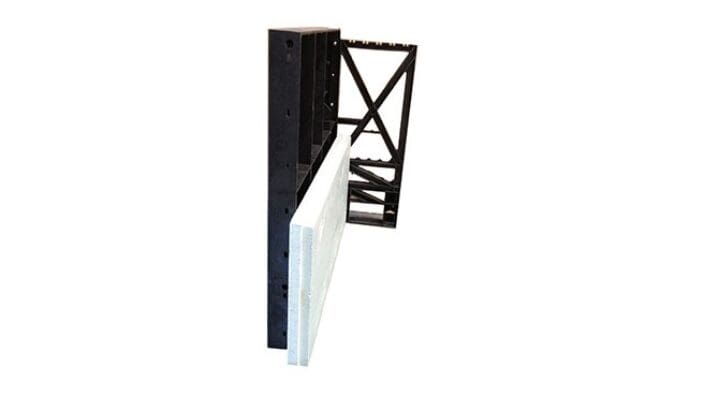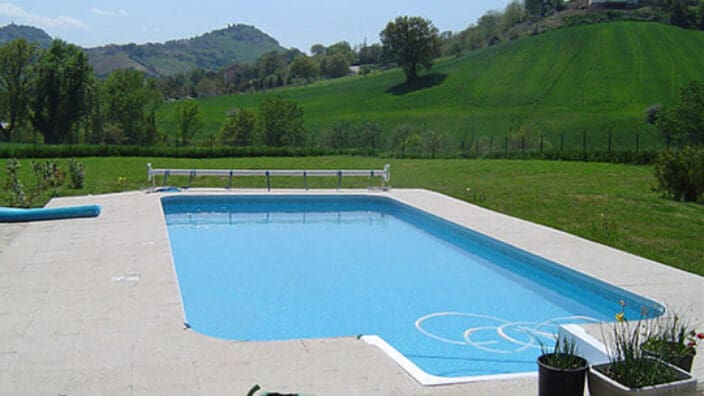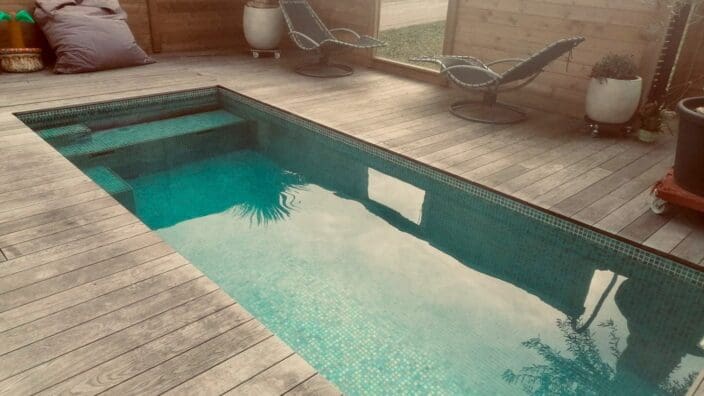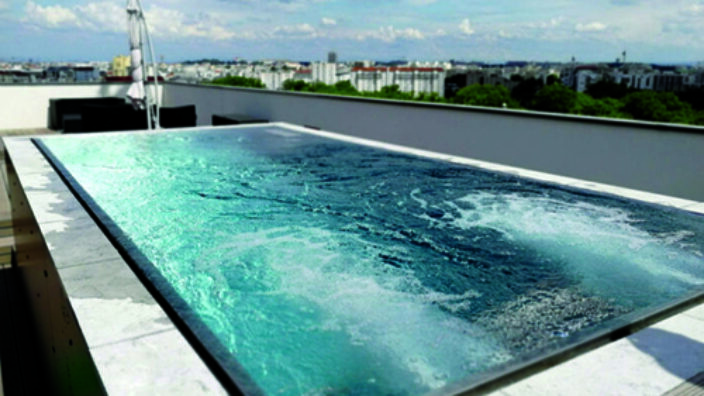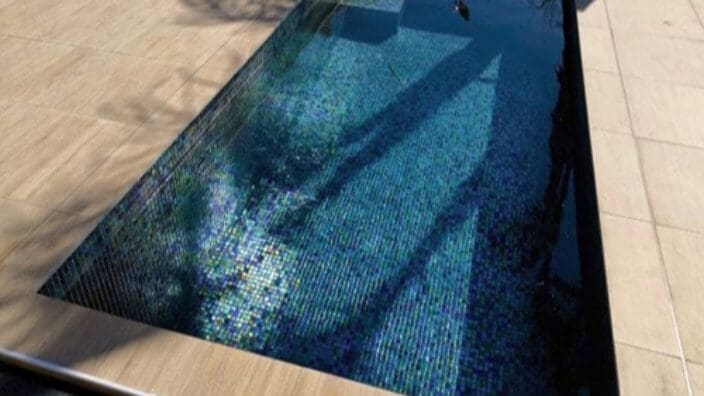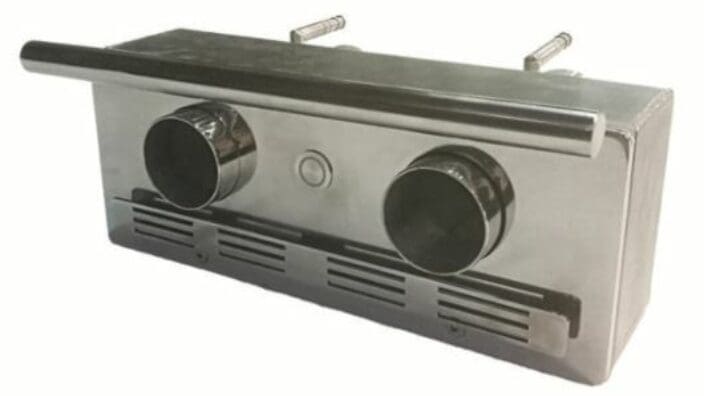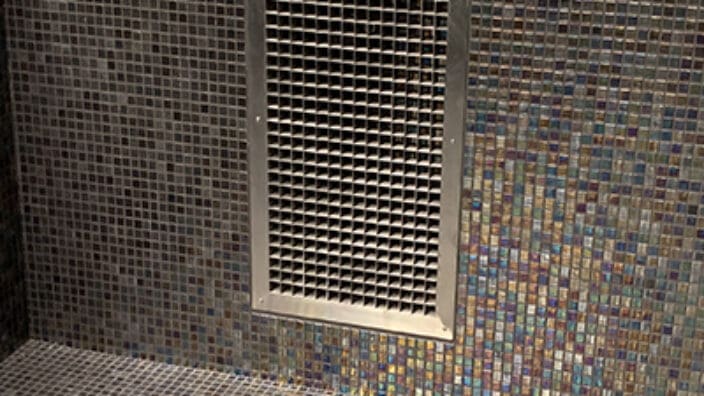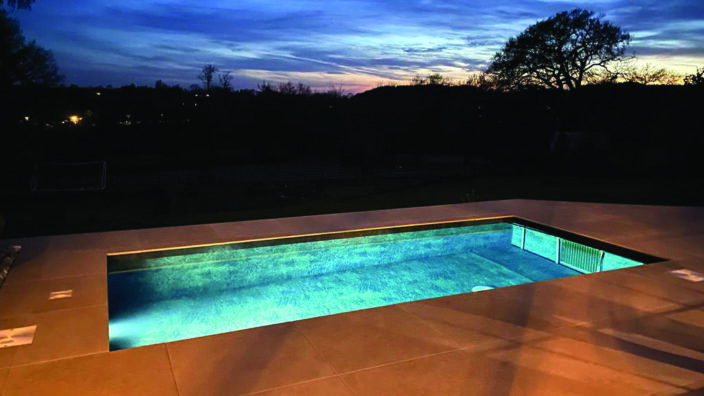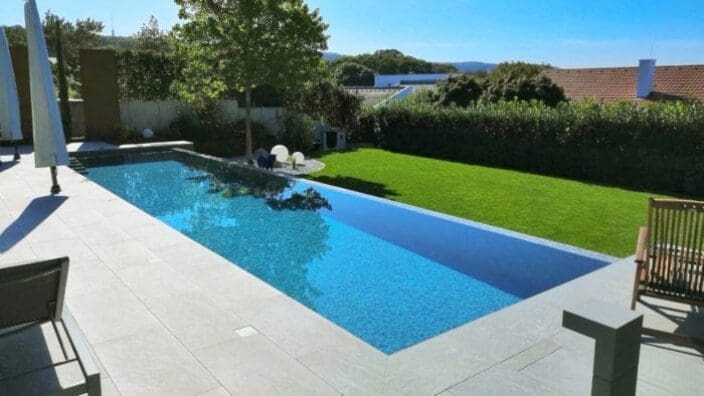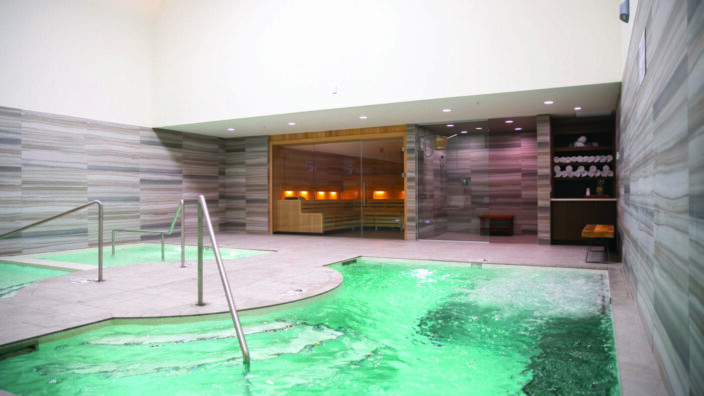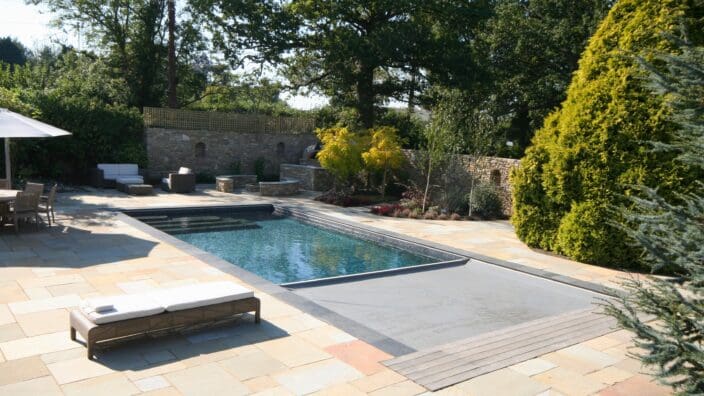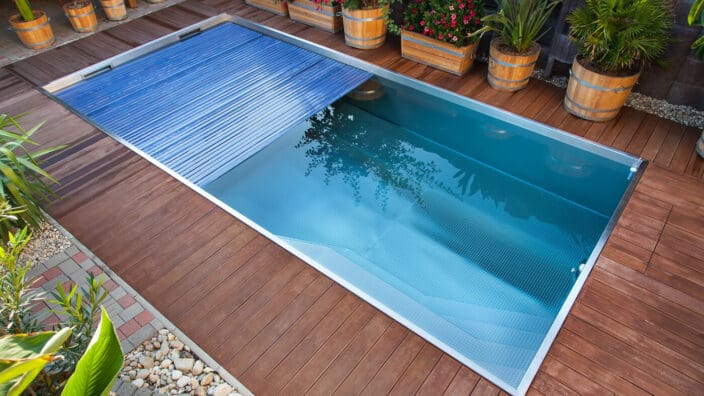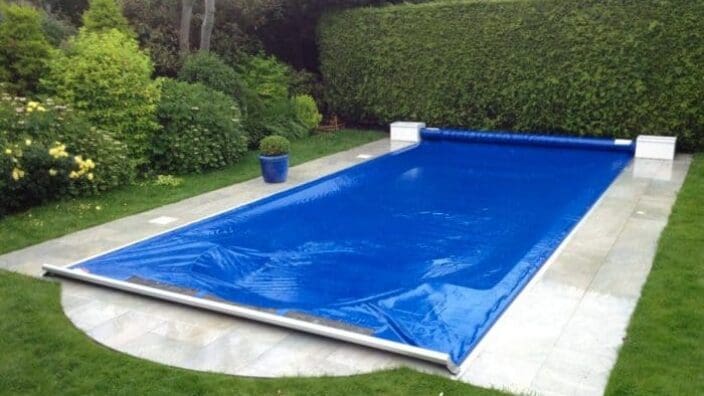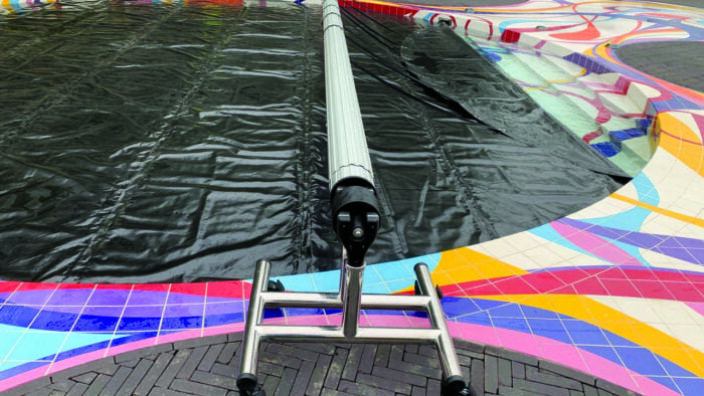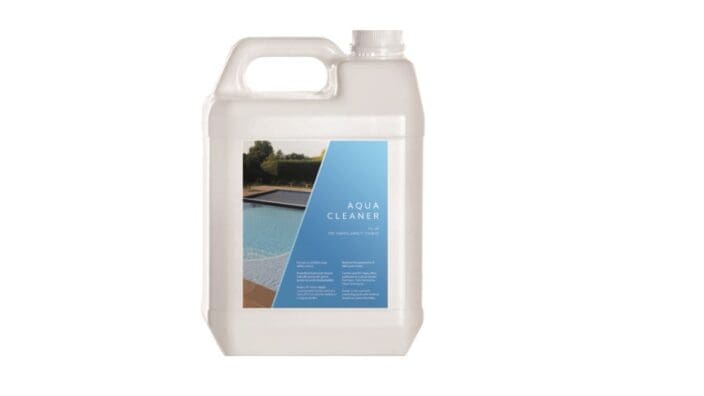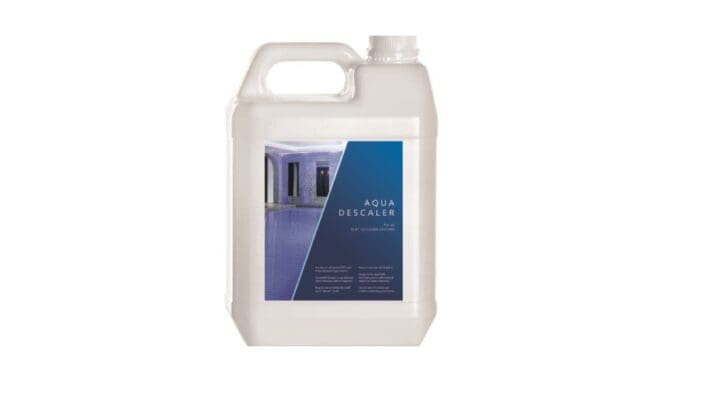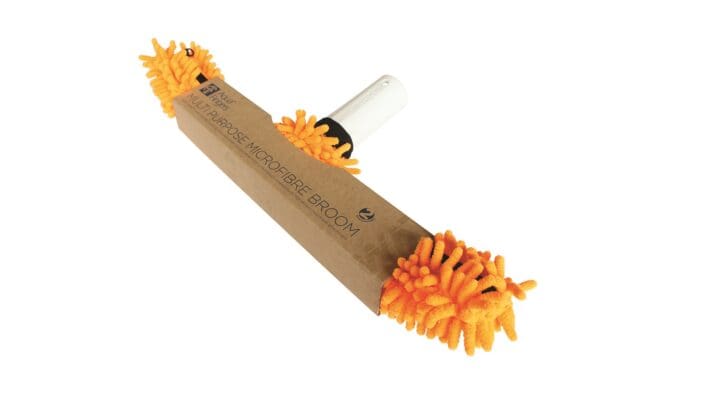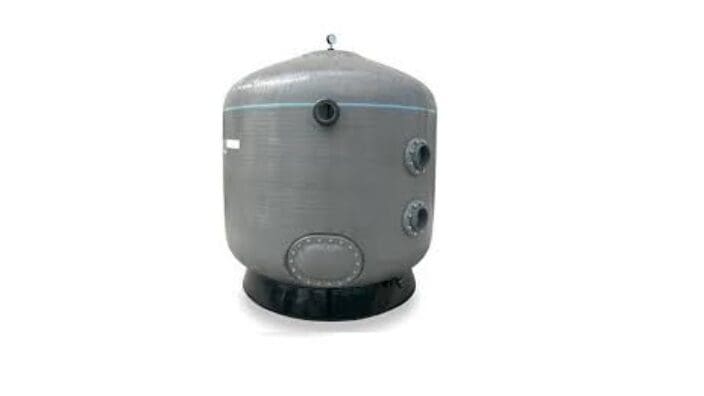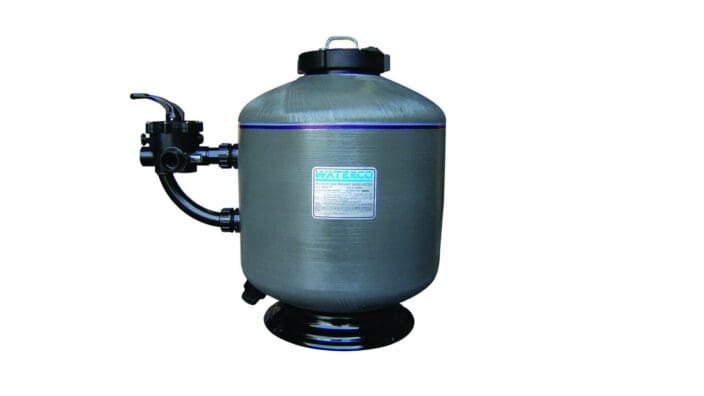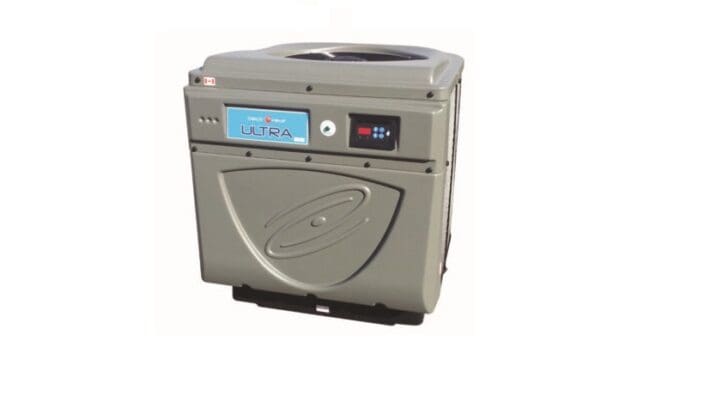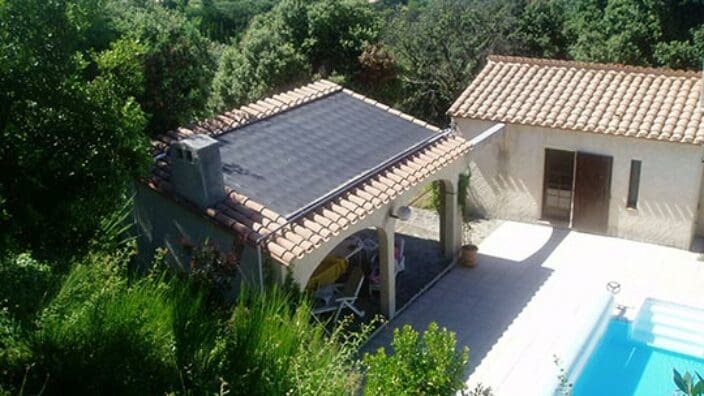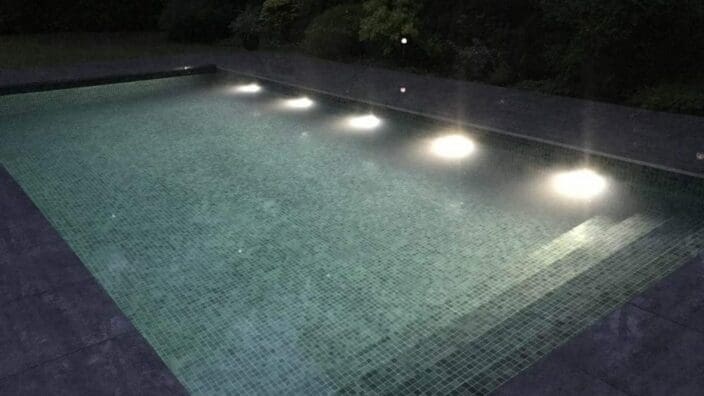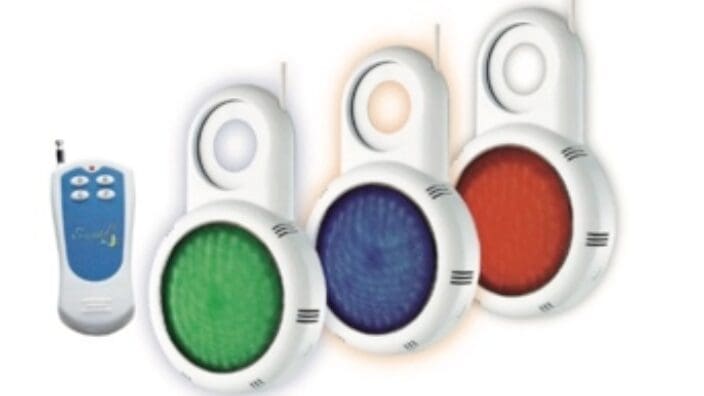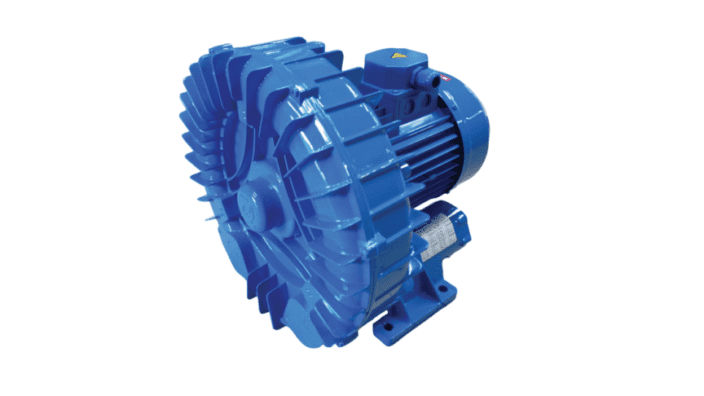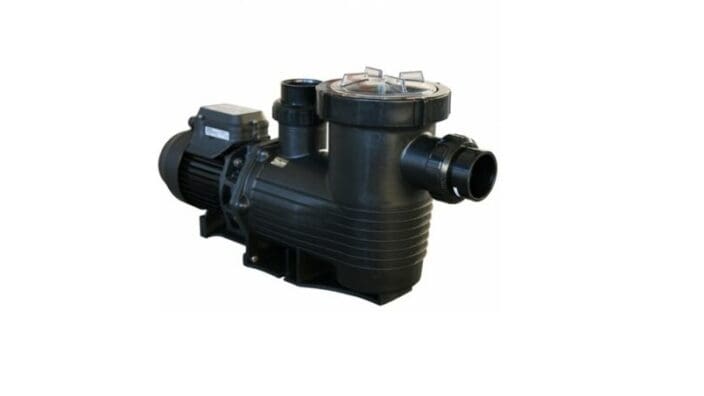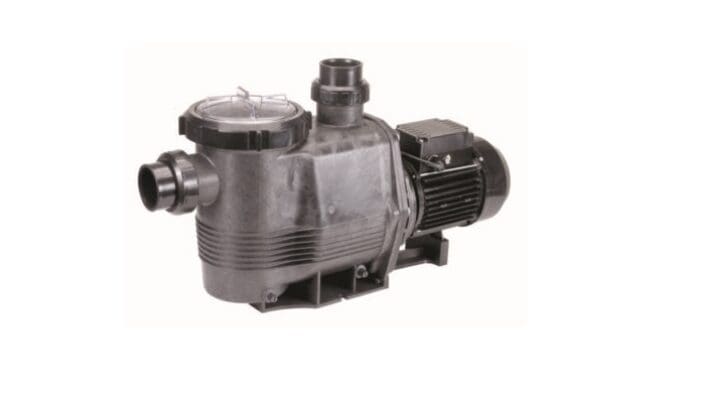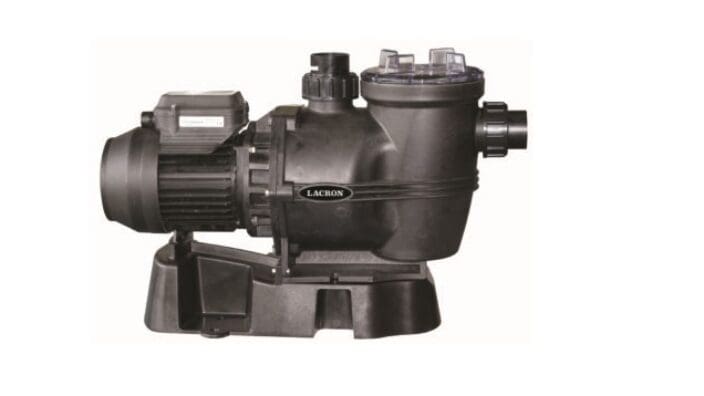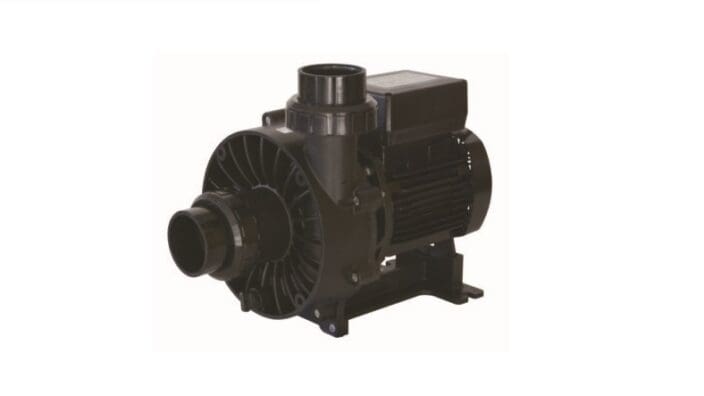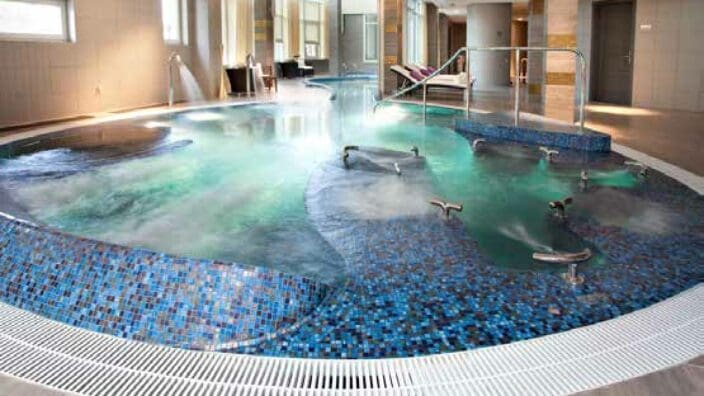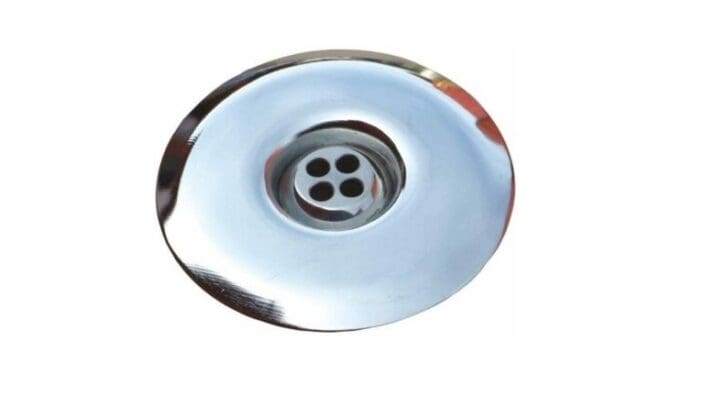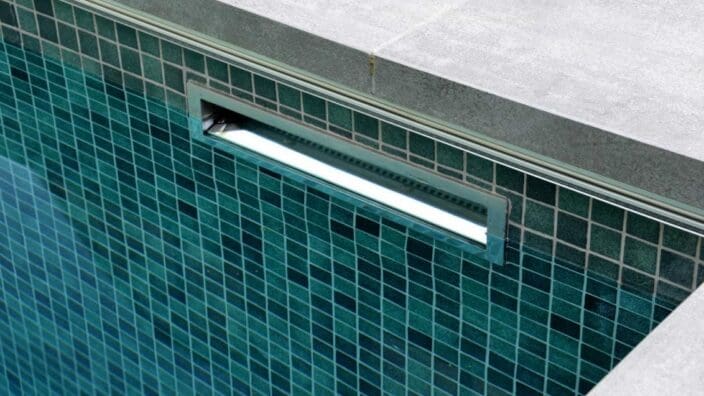Swimming Pool Heat Pumps Explained
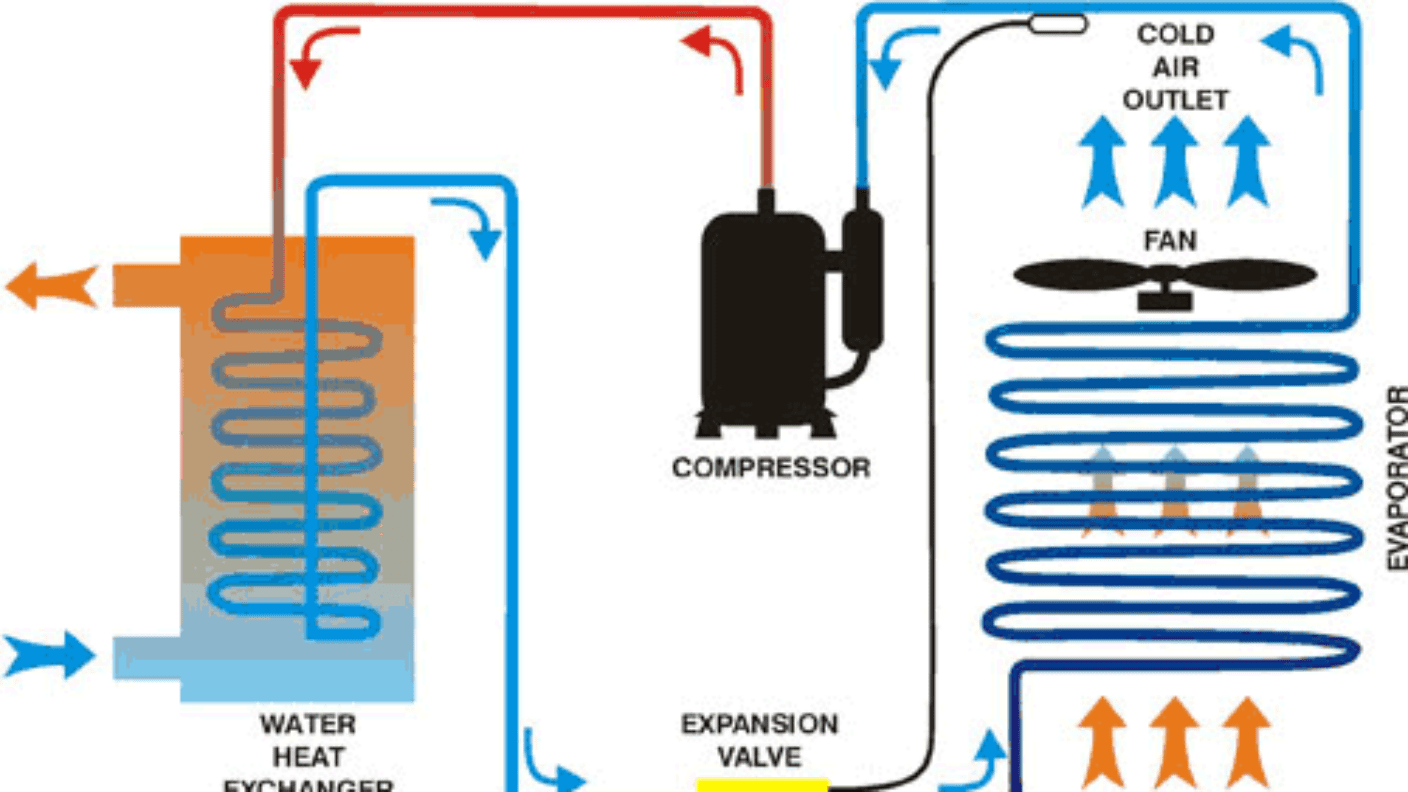
Air source swimming pool heat pump
As two-timmer winners of the coveted swimming pool supplier of the year award, we understand there’s an overwhelming number of different pool heat pumps on the market – many of which come with overly-complex descriptions and even more complex features. To help you find the swimming pool heat pump that suits your needs, on this page we’ve clearly detailed the pool heat pumps we sell in the UK and included detailed explanations of how they all work.
Swimming pool heat pumps (or air source heat pumps) capture the heat from the air and transfer it to your swimming pool water. Swimming pool air source heat pumps are an energy-efficient means of heating your pool water; you can obtain up to 5.25 units of heat for every single unit of electricity used to power them.
Paramount Pool Products Ltd is the UK sole importer for Waterco heat pumps. Please click on ‘find a local dealer’ for your nearest supplier.
Related: Waterco Electro Ultra Low Heat Pump
WATERCO- ELECTRO ULTRA LOW – HEAT PUMP
Award-winning swimming pool heat pump suppliers
As two-time winners of the coveted UK Pool Supplier of the year we’re proud to offer our customers an exceptional range of premium swimming pool heat pumps. Our vast catalogue of swimming pool supplies ranges from the finest LED lights to super-efficient swimming pool skimmers.
Environmentally friendly swimming pool heat pumps
Swimming pool heat pumps do not generate heat; they simply capture it and move it from air to water thus providing an efficient and environmentally friendly system for heating your swimming pool!
Some other benefits of having your pool heated include:
- You will enjoy your swimming a lot more. Warm water is inviting as opposed to cold, swim in comfort throughout the whole season.
- Extend swimming season. Why use your pool for only two months of the year when you can use it regardless of the weather?
- Automation. Set your temperature and let your heat pump do the work.
- Efficiency. Our systems are designed specifically for swimming pools which means that the components used offer maximum efficiency.
Does a swimming pool need a heat pump?
In the UK all swimming pools should utilize a heat pump, either air source or ground source, regardless of whether your swimming pool is above or inground.
Heat pumps are inexpensive overall. They are reasonably priced, easy to install and maintain and an essential item. Having a garden pool may be aesthetically pleasing to the eye but if the water is not warm and inviting you may not want to use your pool as often as you could.
How can I heat my swimming pool?
This is a question that lots of people ask. Generally, the main heating systems available for swimming pools are Gas (LPG or Propane), Electric or Oil heaters. Some of these heaters can be beneficial from a cost point of view but tend to lose their appeal when it comes to installation (and running) costs and this is why a air source or ground source heat pump can be a much better solution to heating a pool.
How do swimming pool heat pumps work?
Essentially the process is similar to the way a refrigerator works. Heat is drawn from the environment surrounding the heat pump which is then turned into heat for your pool.
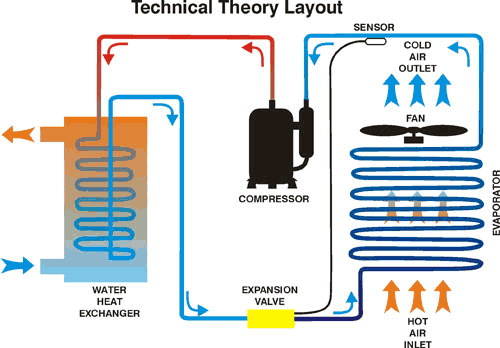
Environmental refrigerant gas absorbs and transfers the heat energy through the refrigeration circulation system. The fan circulates air through the outer Evaporator Air Coil that acts as a heat collector. The liquid refrigerant in the air coil absorbs the available heat in the air transforming it to a gas. The refrigerant gas is then pumped by the Compressor. When this warmed gas is compressed, it intensifies or concentrates the heat. This intensely hot gas is then pumped into the Heat Exchanger Condenser where the actual heat exchange takes place. As the pool water passes through the Heat Exchanger, the hot gas gives up its heat to the cooler pool water. The refrigerant returns to a liquid state and is pumped through the Expansion Valve and then into the Evaporator Air Coil to start the process over again.
A heat pump does not generate heat, it simply captures it and moves it from air to water thus, providing an efficient an environmentally friendly system for heating your swimming pool.
Environmental refrigerant gas absorbs and transfers the great heat energy through the refrigeration circulation system. The fan circulates air through the outer Evaporator Air Coil that acts as a heat collector.
The liquid refrigerant in the air coil absorbs the available heat in the air transforming it to a gas. The refrigerant gas is then pumped by the Compressor. When this warmed gas is compressed, it intensifies or concentrates the heat. This intensely hot gas is then pumped into the Heat Exchanger Condenser where the actual heat exchange takes place.
As the pool water passes through the Heat Exchanger, the hot gas gives up its heat to the cooler pool water. The refrigerant returns to a liquid state and is pumped through the Expansion Valve and then into the Evaporator Air Coil to start the process over again.
How efficient is a water heat pump?
They don’t have a simple efficiency number to work with. Their efficiency is measured by Coefficiency of Performance (COP). COP averages at 5.25 across the range. This means that for every unit of electricity that you put in to run the compressor, you can obtain up to 5.25 units of heat out of the heat pump.
*COP is dependent on a number of factors, i.e water temperature, air temperature and relative humidity.
How noisy are heat pumps?
All heat pumps resonate some form of noise due to the fact that they require a circulating fan to draw the warm ambient air over the evaporator coils. Most heat pump manufacturers have developed their fan motor technology to such an extent that the decibel output is minimal.
Competition’s decibel noise level (dB(A)) ranges from 52- 61 dB(A) comparable to a dishwasher! However, respectful consideration must be to adjoining neighbours regarding installing any type of mechanical heater, be it gas, oil or an electric heat pump. What one noise level may be accepted or tolerated by one person may not be accepted by another!
In general the RA model is slightly quieter due to the nature of the fan that is used in manufacture. The RA has a plastic circulating fan as opposed to a steel blade meaning there is less noise produced.
If a noise level is of concern or if in doubt we would strongly recommend that the RA model is acquired and installed in an indoor environment.
How do I know that I am buying the correct size unit?
Sizing the correct heat pump for your pool is very important. We recommend that you use a pool heat loss calculator to determine how much heat your pool construction loses. You will then be able to purchase the correct size heater.
When I use a heat pump, should I use a pool cover or solar blanket as well?
Any reduction in pool heat loss directly translates into savings. 82% of all losses are due to evaporation. Using a pool cover just a night will save about 40% of the annual heating cost. A pool cover or solar blanket can cut total pool heat loss by 50% to 95%. The use of a solar blanket will also help extend your pool season.
What is the minimum ambient operating temperature?
Both heat pumps will actually operate down to an ambient air temperature of 0 degrees Celsius, but with minimal heat output. Therefore we recommend that the minimum operating temperature should be 15 degrees Celsius. Other conditions such as wind, shade and physical location will affect the shut-off temperature of the unit.
Will the heat pump ever need more Freon (refrigerant gas)?
Unless the heat pump has a leak in the sealed refrigeration system, the factory charge of Freon should last for the life of the unit. Freon is very stable and should not degrade or breakdown even under severe operating conditions. If your unit needs Freon, then it has a leak, and adding Freon will not solve the problem. The leak must be located and repaired. Fortunately, Freon leaks are very uncommon and usually are due to shipping damage.
How close to your pool?
Normally, the pool pump and heat pump are installed close together and within 25 feet of the pool. The longer the distance from the pool, the more heat loss from piping. Since normally most of the piping is buried, the heat loss is minimal for runs of up to 50 feet (50 feet to and from the pump = 100 feet total) unless the ground is wet or the water table is high. A very rough estimate of heat loss per 100 foot is 2500 BTU/hr for every 10 degrees Fahrenheit difference in temperature between the pool water and ground surrounding the pipe, which translates to about 3% to 5% increase in run time.
What size heat pump do I need for my pool?
The size of heat pump that you’ll need for your pool will depend on the size of your pool, the thermal properties of your pool structure, wind speed, water velocity, water table and whether or not you’re using a heat retention cover. A good rule of thumb is to assess the amount of heat (in kW) that you are likely to lose on an hourly basis and buy a heat pump that exceeds that number. See our Swimming Pool Heat Pump Size Guide Chart below for more information.
What pool heat pump is best?
The best pool heat pump for you will depend on your swimming pool, as well as the conditions that you are running it in. The following products have been chosen for their performance and efficiency:
- ElectroHeat Plus – Features extra-large evaporator for maximum heat extraction, perfect for extending swimming pool season or roof top pools.
- ElectroHeat Eco V Inverter Heatpump – Features variable fan and compressor speed to maintain a constant temperature and improve overall efficiency.
- ElectroHeat Aquaflow MkII – Features horizontal ventilation for smaller installations such as plunge pools and spas.
- ElectroHeat Ulra Sub Zero – Heats pools in colder climates, even when temperatures drop close to freezing. ElectroHeat Pro – For cost-effective commercial swimming pool heating.
Are pool heat pumps worth it?
Pool heat pumps usually cost more than traditional pool heaters, however this is offset by a lower annual operating costs. A pool heat pump is worth investing in if you are looking to reduce your heating costs, whilst also looking to potentially extend the season of your outdoor swimming pool.
How much does it cost to run a pool heat pump?
The cost of running a heat pump will depend on the size of your swimming pool, the ambient temperatures that you’re operating the pump and the target temperature you’re trying to reach. As an approximation, it would cost £5 per day heat a 10m x 4m pool to 28°C.
How long does it take a heat pump to heat a pool?
A swimming pool heat pump takes between 24 and 72 hours to heat a pool by 11°C. This time will vary depending on the size of your pool, the power of your pool heat pump and the ambient temperature.
Should I run my pool heat pump at night?
You should run your pool heat pump at night if you are planning on swimming first thing in the morning. How and when you choose to run your pool heat pump will depend on how often you swim and at what time of day. Using an automated control system can help to reduce costs.
What months are heat pumps ideally suited for?
Normally, heat pumps are sold for use in the summer season only. Yes, all the manufacturers state that they will work in ambient temperatures from 0-5 deg but will have minimal heat output, and realistically, at these temperatures you will be unlikely want to be swimming. Ideally, a heat pump should not be switched on until the ambient air temperature has reached 15-20 deg.
Heat pumps are ideally suited for heating your pool in the summer season only (May – September). However, with various climate changes that we have been experiencing in recent years, we have had reports from our customers that they have been running their heat pumps from April to late October!
How do I go about sizing the heat for my swimming pool?
Unfortunately, sizing the heat for your swimming pool is not an exact science due to so many variables such as the thermal value of the pool structure, wind speed, water velocity, water table etc and if a heat retention cover has been applied.
Therefore, heat pump manufacturers’ base their calculation on the amount of heat (kW) your pool is likely to loose on an hourly basis. You will see that on some pool sizes we recommend two sizes of heater. If your budget allows, it is desirable to buy the larger size, due to it being more cost effective, efficient thus resulting is a quicker heat up time.
Swimming Pool Heat Pump Size Guide Chart
The sizing chart below assumes the following:-
- 15 deg C / 59F ambient air temperature (Realistic for start of season)
- Average wind speed 2.5 metres per second
- Desired water temperature 30 deg c / 86F
- Average pool depth 1.5m / 5ft
- No water table surrounding pool structure
- Minimum running time 10 hours per day
| Pool Size – Imperial | Pool Size – Metric | Heater | |||||
|---|---|---|---|---|---|---|---|
| Length (ft) | Width (ft) | Approx Gallons | Length (M) | Width (M) | Approx Litres | Minimum size heater required (KW) | Optimum size heater required (KW) |
| 24 | 12 | 8550 | 7.32 | 3.66 | 38868 | 9/10 | 14 |
| 26 | 13 | 10034 | 7.92 | 3.96 | 45616 | 9/10 | 14 |
| 28 | 14 | 11638 | 8.53 | 4.27 | 52904 | 9/10 | 29 |
| 30 | 15 | 13359 | 9.14 | 4.57 | 60732 | 14 | 29 |
| 32 | 16 | 15200 | 9.75 | 4.88 | 69099 | 29 | 29 |
| 40 | 20 | 19238 | 10.97 | 5.49 | 87454 | 29 | 29 |
| 40 | 20 | 23750 | 12.19 | 6.10 | 107968 | 29 | 29 |
We also sell alternative forms of swimming pool heating.
